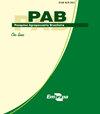桃棕榈幼苗促生长内生细菌的研究
IF 0.7
4区 农林科学
Q3 AGRICULTURE, MULTIDISCIPLINARY
引用次数: 0
摘要
摘要本研究旨在分离分离桃棕内生细菌(Bactris gasipaes var. gasipaes),并评价其接种对桃棕幼苗的影响。在离体条件下,从桃棕幼苗的叶、根和分生组织中分离出细菌。采用16S rRNA基因部分测序方法,对15株不同表型组的分离株进行表型鉴定。然后,将这些分离株和2株巴西偶氮螺旋菌(Ab-V5和Ab-V6)接种于桃棕幼苗。76 d后,对幼苗进行植株发育评价。根据测序结果鉴定出以下6个属:假单胞菌、肠杆菌、根瘤菌、窄养单胞菌、克雷伯菌和欧文菌。在15株接种菌株中,有9株对棕榈桃根干质量有积极影响,其中CNPF 77 (Enterobacter sp.)、CNPF 100 (Rhizobium sp.)、CNPF 179和CNPF 277(窄养单胞菌sp.)表现突出。桃棕幼苗含有能增加根系干物质的内生细菌。本文章由计算机程序翻译,如有差异,请以英文原文为准。
Plant growth-promoting endophytic bacteria in peach palm seedlings
Abstract The objective of this work was to isolate endophytic bacteria from peach palm (Bactris gasipaes var. gasipaes) plants and to evaluate the effects of their inoculation on the plant seedlings. Bacteria were isolated from the leaves and roots of the seedlings and from the meristems of peach palm plants in vitro. The isolates were characterized phenotypically and, then, 15 of them, representing different phenotypic groups, were selected and identified by partial sequencing of the 16S rRNA gene. Afterward, these isolates and two commercial strains of Azospirillum brasilense (Ab-V5 and Ab-V6) were inoculated in the peach palm seedlings. After 76 days, the seedlings were evaluated for plant development. The following six genera were identified based on the sequencing: Pseudomonas, Enterobacter, Rhizobium, Stenotrophomonas, Klebsiella, and Erwinia. Out of the 15 inoculated isolates, 9 had a positive effect on the root dry mass of palm peach, with CNPF 77 (Enterobacter sp.), CNPF 100 (Rhizobium sp.), and CNP 179 and CNPF 277 (Stenotrophomonas sp.) standing out. Peach palm seedlings harbor endophytic bacteria which are able to increase root dry matter.
求助全文
通过发布文献求助,成功后即可免费获取论文全文。
去求助
来源期刊

Pesquisa Agropecuaria Brasileira
农林科学-农业综合
CiteScore
1.20
自引率
0.00%
发文量
45
审稿时长
9-18 weeks
期刊介绍:
Pesquisa Agropecuária Brasileira – PAB – is issued monthly by Empresa Brasileira de Pesquisa Agropecuária – EMBRAPA, affiliated to Ministry of Agriculture, Livestock and Food Supply. PAB publishes original scientific-technological articles on Plant Physiology, Plant Pathology, Crop Science, Genetics, Soil Science, Food Technology and Animal Science.
Its abbreviated title is Pesq. agropec. bras., and it should be used in bibliographies, footnotes, references and bibliographic strips.
 求助内容:
求助内容: 应助结果提醒方式:
应助结果提醒方式:


